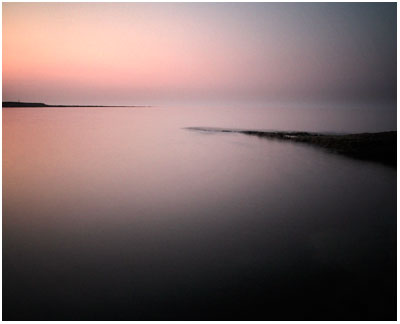Visualisation, I think, is the act of looking at the real world, and imagining it as a picture.

I know a lot of large format photographers love using the medium because it enables them to visualise better. I've heard some photographers say that once an image is projected onto the ground glass at the back of the camera, it has taken on a new meaning. They're no longer looking at the real world - instead, they are looking at an interpretation of it.
3D into 2D
Firstly, the image is now 2D instead of 3D. This is an interesting point in the art of being able to translate a scene into a photograph. We must be able to view a three dimensional scene before us and know how it is going to look in the final picture. I feel a lot of people struggle with this. For instance, closing one eye to view a scene allows you to remove that extra dimension and see how objects in a scene relate to each other. If you have two objects close or overlapping - it's easier to interpret this in 2D than in 3D. I've seen photos I think will work and when they're flattened down to 2D, they become confused, messy images where it's hard to discern where one object ends and another begins.
Upside Down
A lot of large format photographers prefer to compose an image upside down. Large format cameras don't have prisms in them to turn the image the right way up. If you don't know this already - the real world is projected onto your retinas upside down. Your brain takes care of turning it the right way up. With an SLR, the image is flipped the right way up for you. But with a basic LF camera, it behaves very much like our own eye.... the scene is projected onto the ground glass upside down.
A lot of photographers prefer this, because they say when the image is upside down, they no longer think of it as some meaningful scene. They just see shapes, tones, diagonals, curves. They're able to take a step away from the 'scene' and think of it more as a collection of pleasing shapes and lines. They're able to see it more as a picture than reality.
I think as photographers, if we want to improve our visualisation technique, we need to start believing that whatever we see through our viewfinder is no longer real. We need to think of it as a picture hanging up on a wall. Cropped, composed, with pleasing harmonious tones in it.
